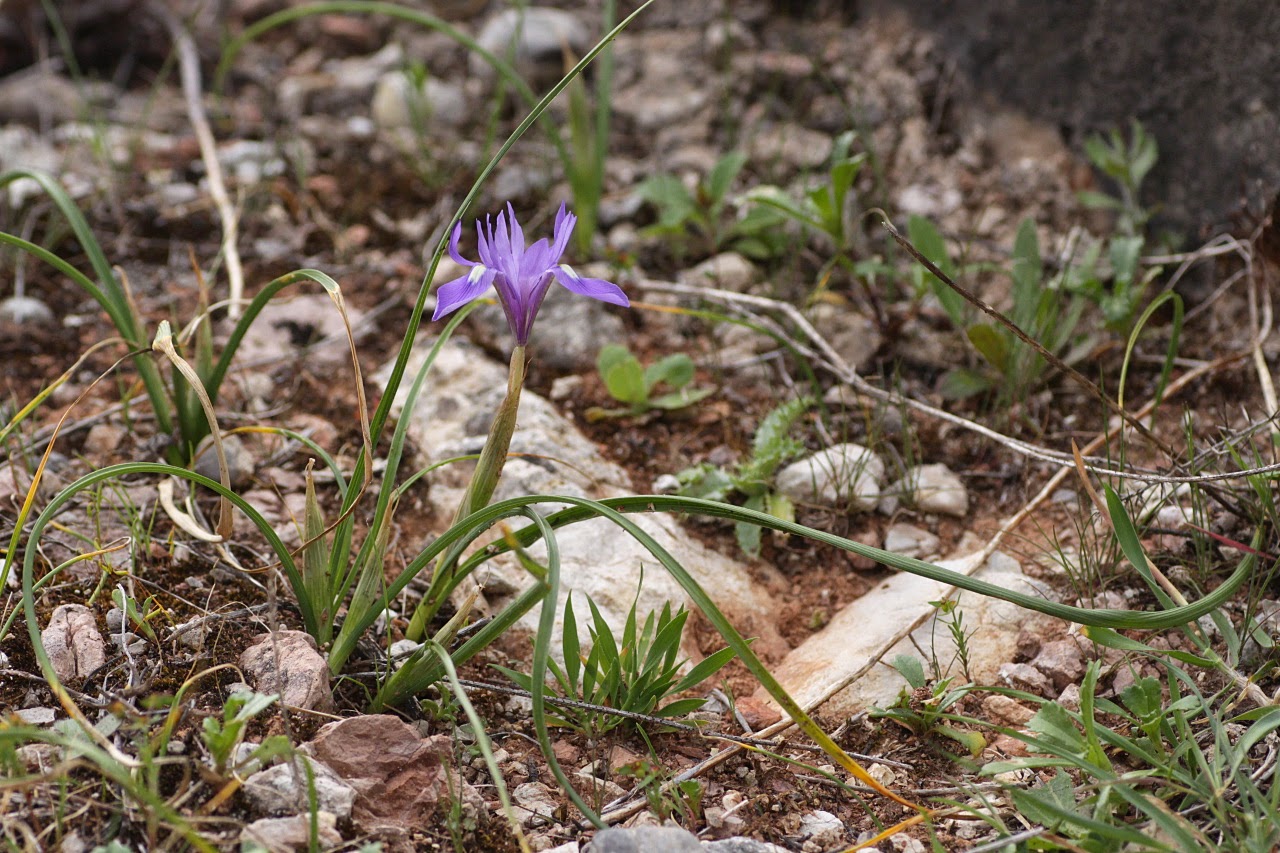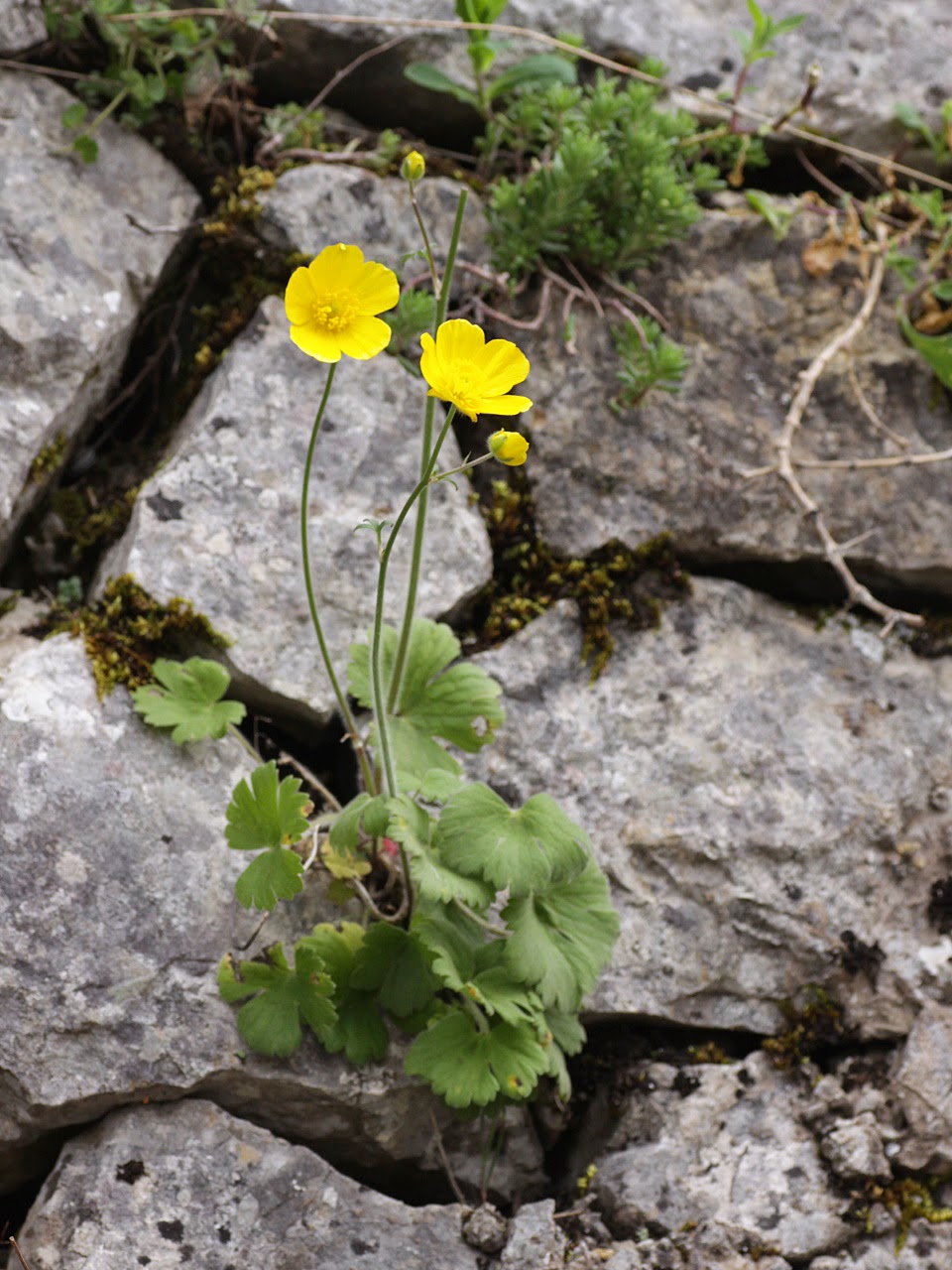Mid-morning I was at Benaoján station, not to take a train but to walk over the railway to the Río Guadiaro trail. The path took me over the river and into oak forest with grass clearings.
One of these clearings was a mound with a nice selection of plants, including one or two Narcissus assoanus still in flower (and others that had finished).
Here too was Linaria oblongifolia, and my first Yellow Bee Orchid Ophrys lutea, which was even brighter and more striking than I imagined it would be.
My next distraction was a Scarce Swallowtail Iphiclides podalirius on some asphodels Asphodelus macrocarpus.
As the trail approached the river again I heard an Iberian Chiffchaff singing from the trees on the other side. I climbed down the bank to try to get nearer and work out where it was, but every time I did that I couldn't hear the song for the roar of the river, so I went back up and found that the chiffchaff was too far away again. So it continued, and I never did see it.
Back at the station, I climbed up a small path to the main road. There were some fumitories in the rougher parts. One of them was Fumaria reuteri, a rare casual in Britain, but perhaps native here. Note the smooth sepals and purple tipped flowers.
Another was Fumaria capreolata with its distinctive down-turned stalks on the older flowers.
The stony ground above was home to a star-of-Bethlehem Ornithogalum baeticum and the inelegantly named Barbary Nut Gyandriris sisyrinchium which is an iris and not at all nutty.
Compared with the other jonquils I had seen, these had even longer tubes and pedicels, and even shorter coronas. These are the characters of Narcissus jonquilla, which is what these plants must be, but I wondered whether any of the week's previous jonquils, with their slightly shorter flowers were therefore fernandesii. That species is supposed to be intermediate between jonquilla and assoanus, but, as is ever the case with Narcissus, nobody is able to agree on what it is or what it looks like. Flora Iberica treats it as part of the variation within assoanus, which is practical approach, but a recent DNA analysis of the genus puts it with jonquilla and suggests that it is derived from a hybrid between jonquilla and gaditanus. Take your choice.
Despite the variation in measurements, all of my meadow jonquils have had straight or slightly upcurved tubes, whereas fernandesii is supposed to have a slightly downcurved one (gaditanus has a very downcurved tube, so this fits with the hybrid origin), so I am going to call them all jonquilla.

As I had found somewhere to stop, I walked back down the road and through some limestone rocks towards the Cerro de Tavizna, an impressive steep mound with fields of scree tumbling down its side. The rocks were rich in orchids and other delights, including more Fritillaria lusitanica and Gynandriris sisyrinchium.
A bit of a climb was needed to get to Ornithogalum reverchonii, a white bluebell-like star-of-Bethlehem that was just coming into flower. This is one of the rarest of the Betic species; it is found only in Cazorla and the Serranía de Ronda in Spain, and very locally in Morocco.
Back along the roadside there were more Ophrys orchids. Some fusca, lacking the yellow margin of many of those from El Cortijo Nuevo, and tenthredinifera.
All week I had been seeing false daffodils: the yellow flowers of a large buttercup can make you think you have found another Narcissus high up on the rocks. But it is still a pretty plant, and a fine addition to the natural rock garden here.
It goes by the name of Ranunculus spicatus, which is pleasant enough, but if you want to separate it from the North African plants it becomes subsp. blepharicarpos, which is enough to put me off my dinner.
Instead of passing Ronda again on my way back, today I went into the town to have a look around. After negotiating its narrow streets I found a space to park the car and walked up the hill to the bridge. This spans El Tajo gorge, an impressively deep cleft, with cliffs plummeting down to the river below. It is surprising to find such a spectacle in the middle of a town, and it accounts for some unusual urban birds. Where you might expect to find Jackdaws, instead there are Choughs flying around the streets, and from a viewpoint near the Plaza de Toros you can look down on Lesser Kestrels while Alpine Swifts speed by at eye level. Just don’t get too close to the edge if you are not good with heights.




























No comments:
Post a Comment